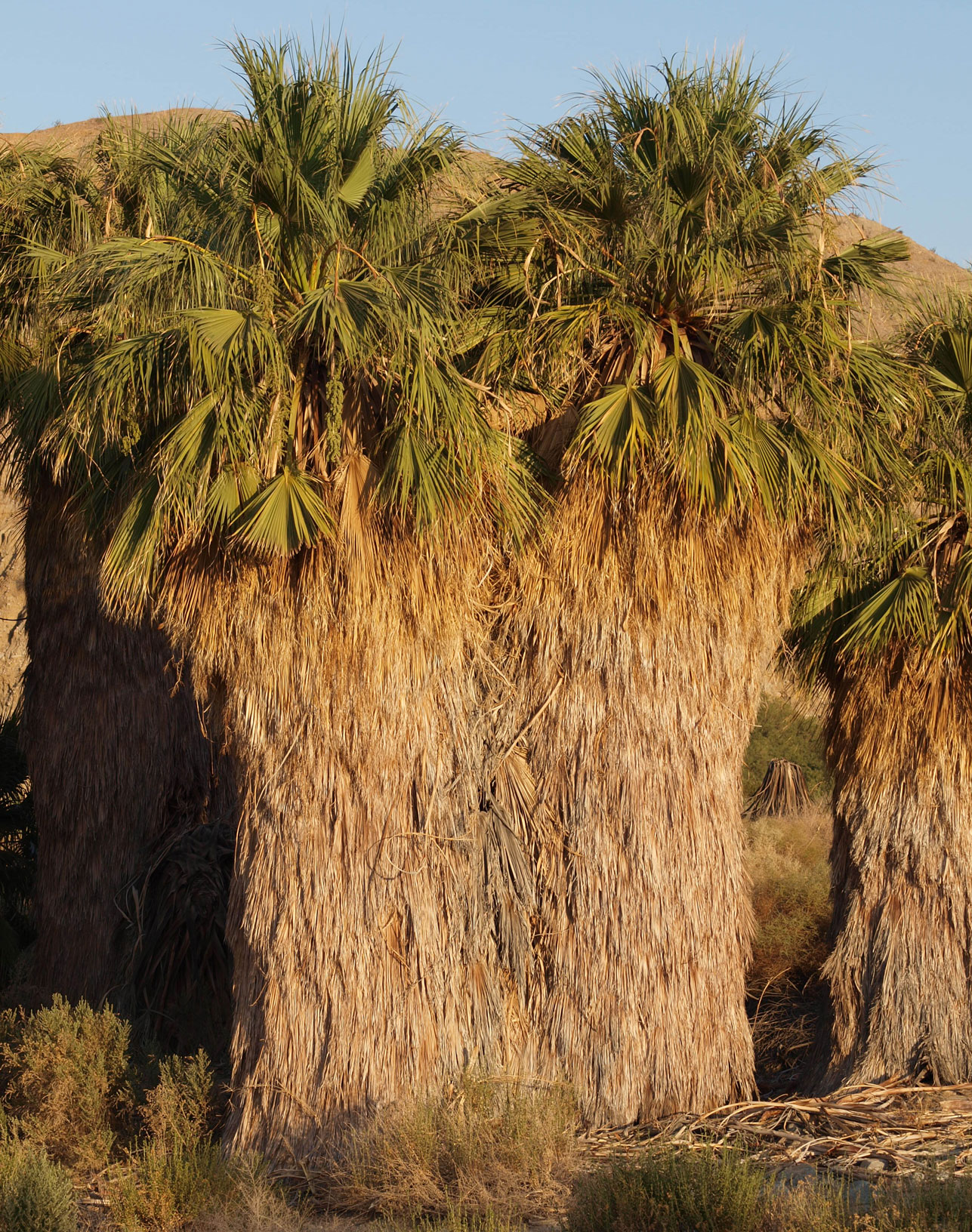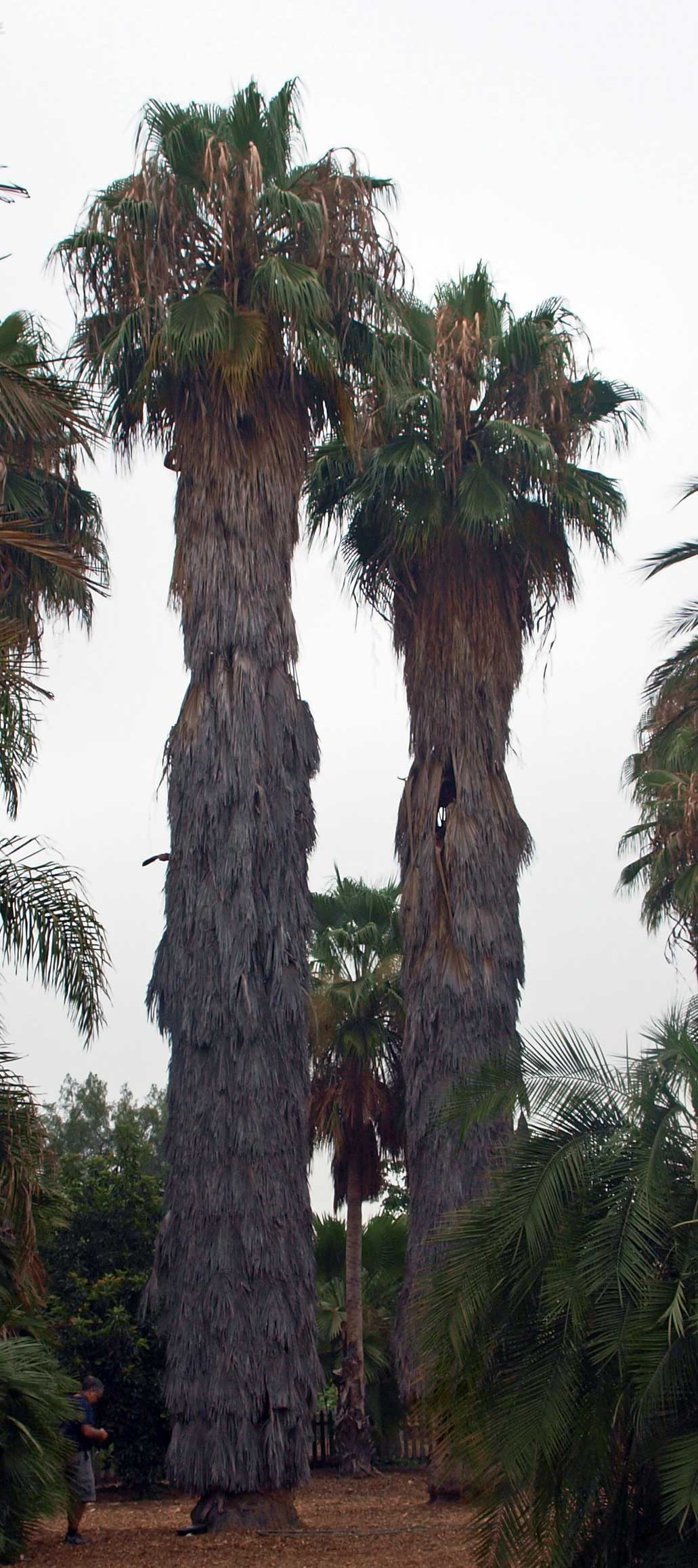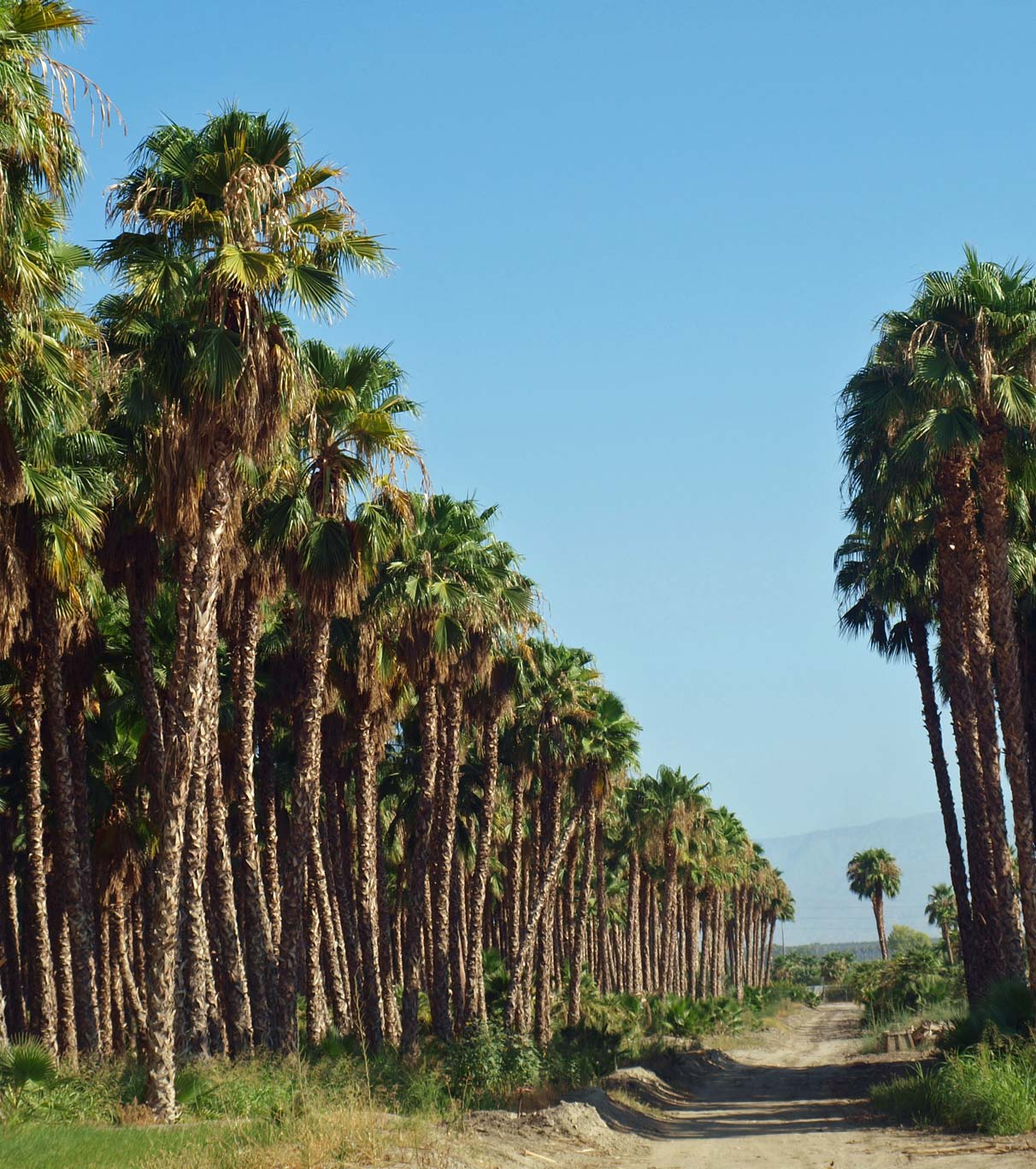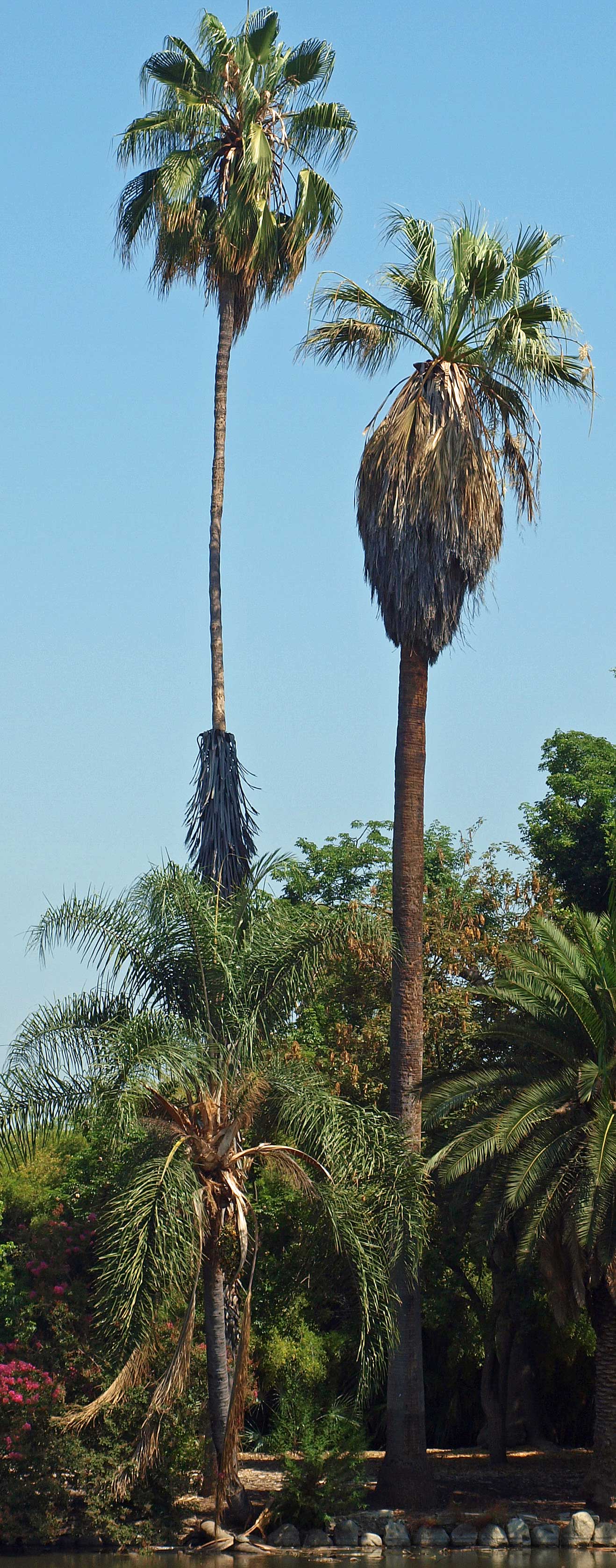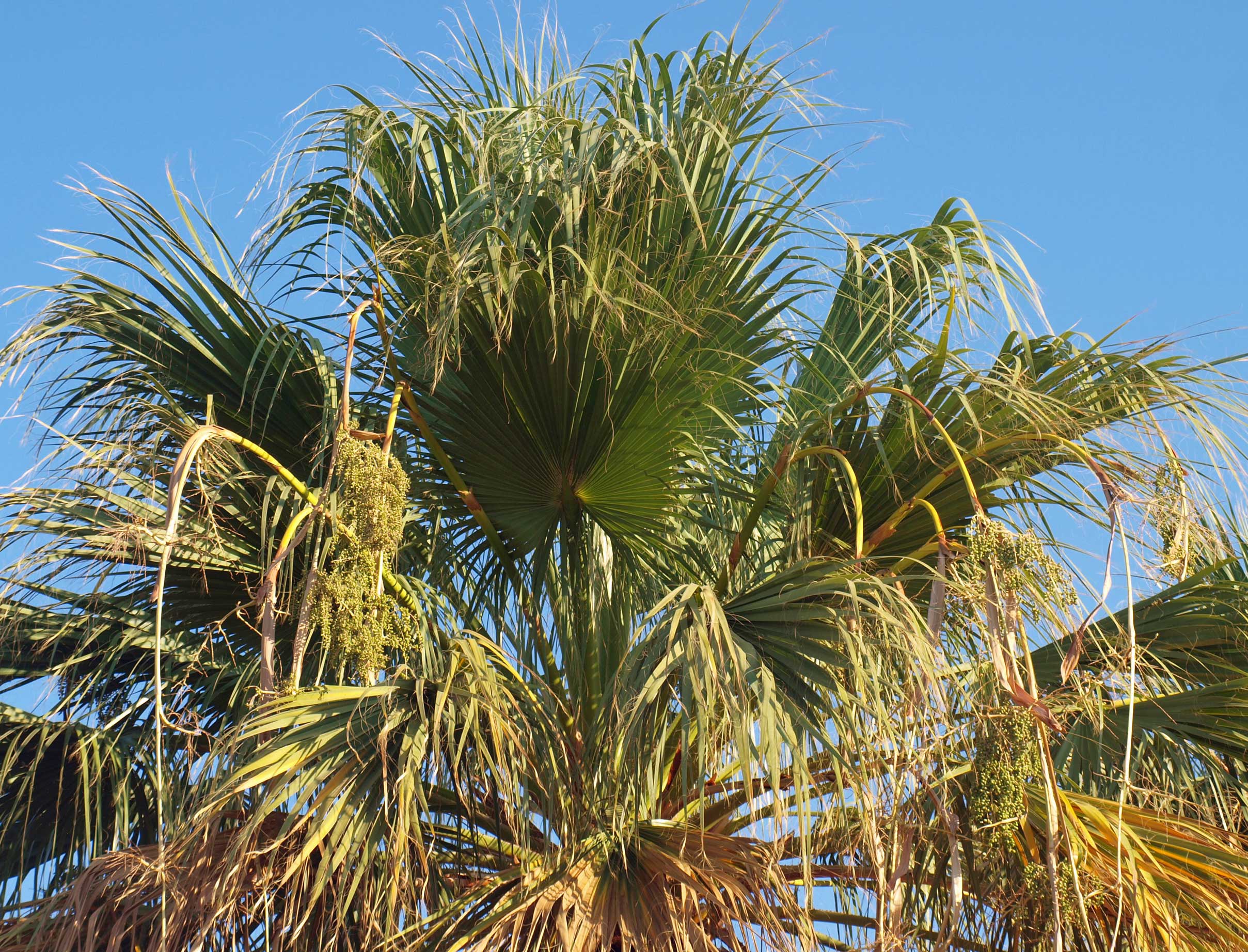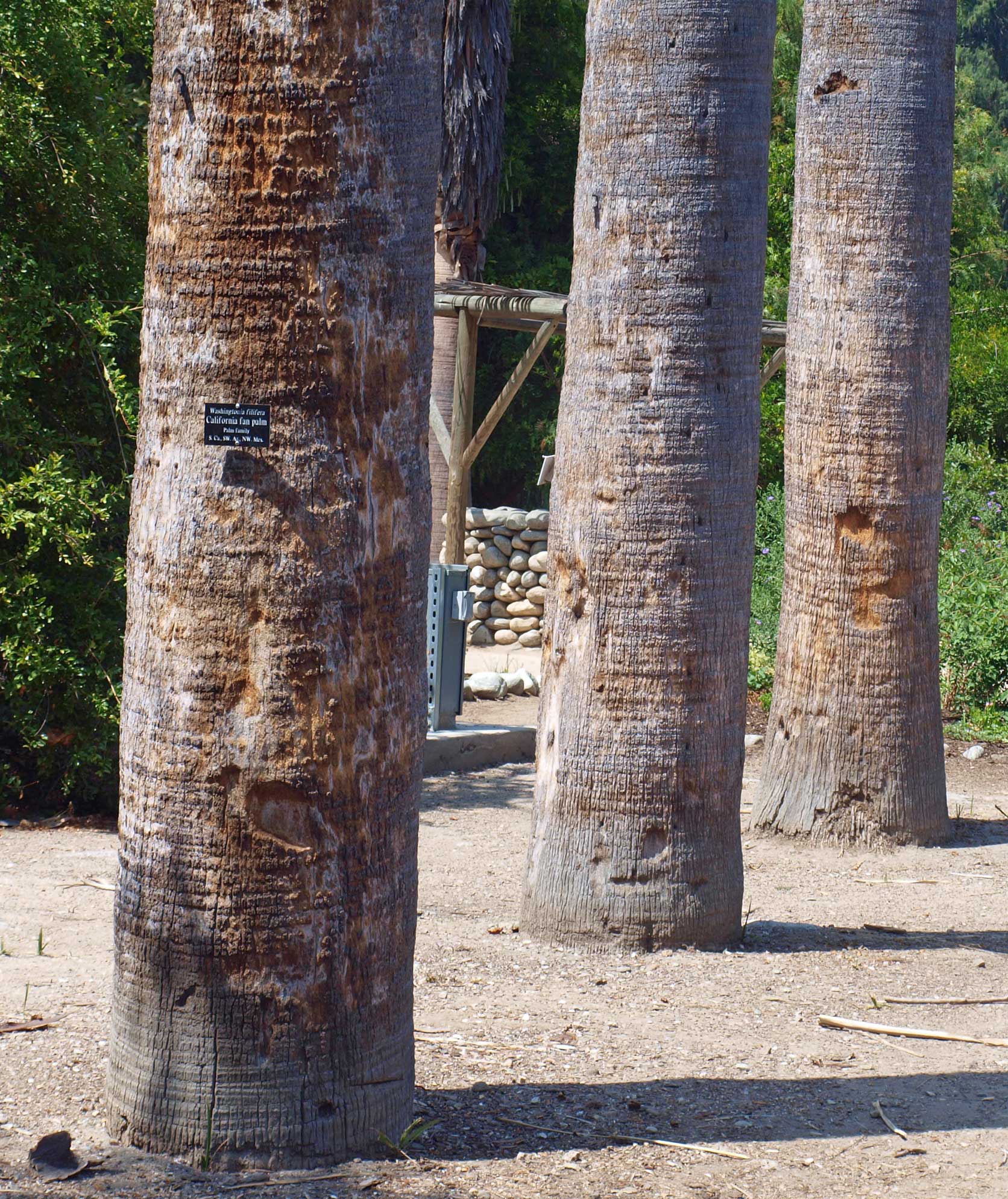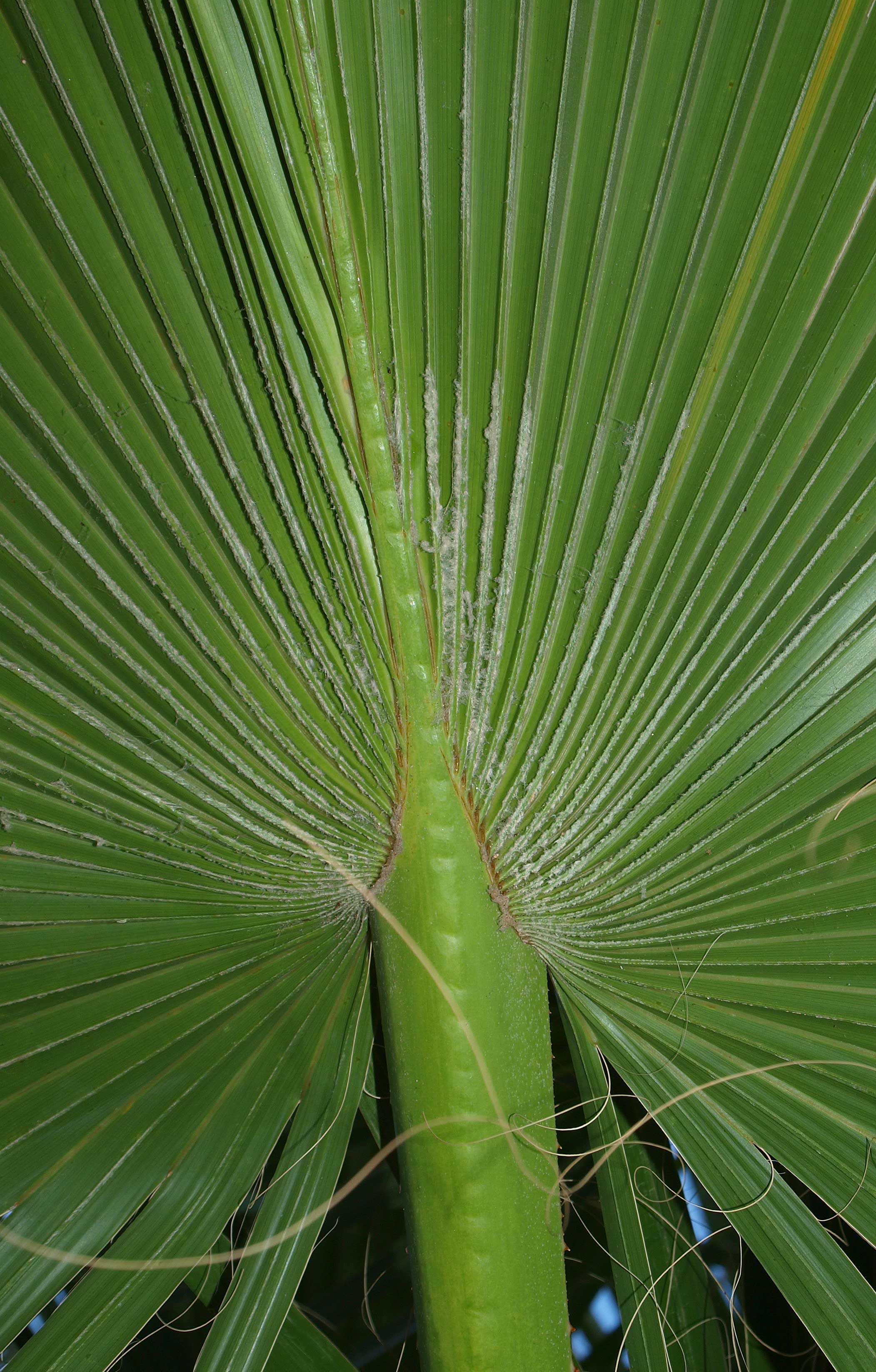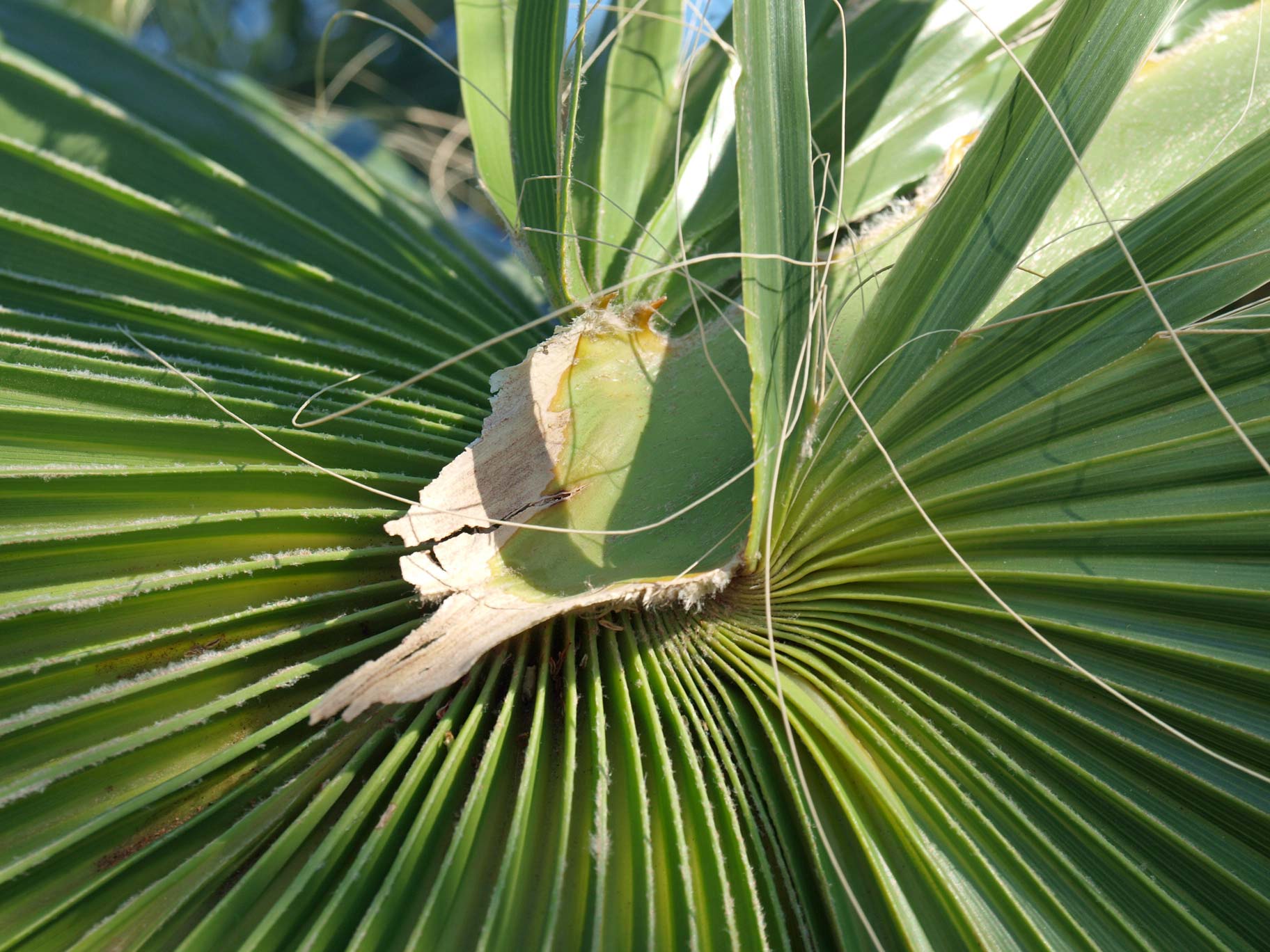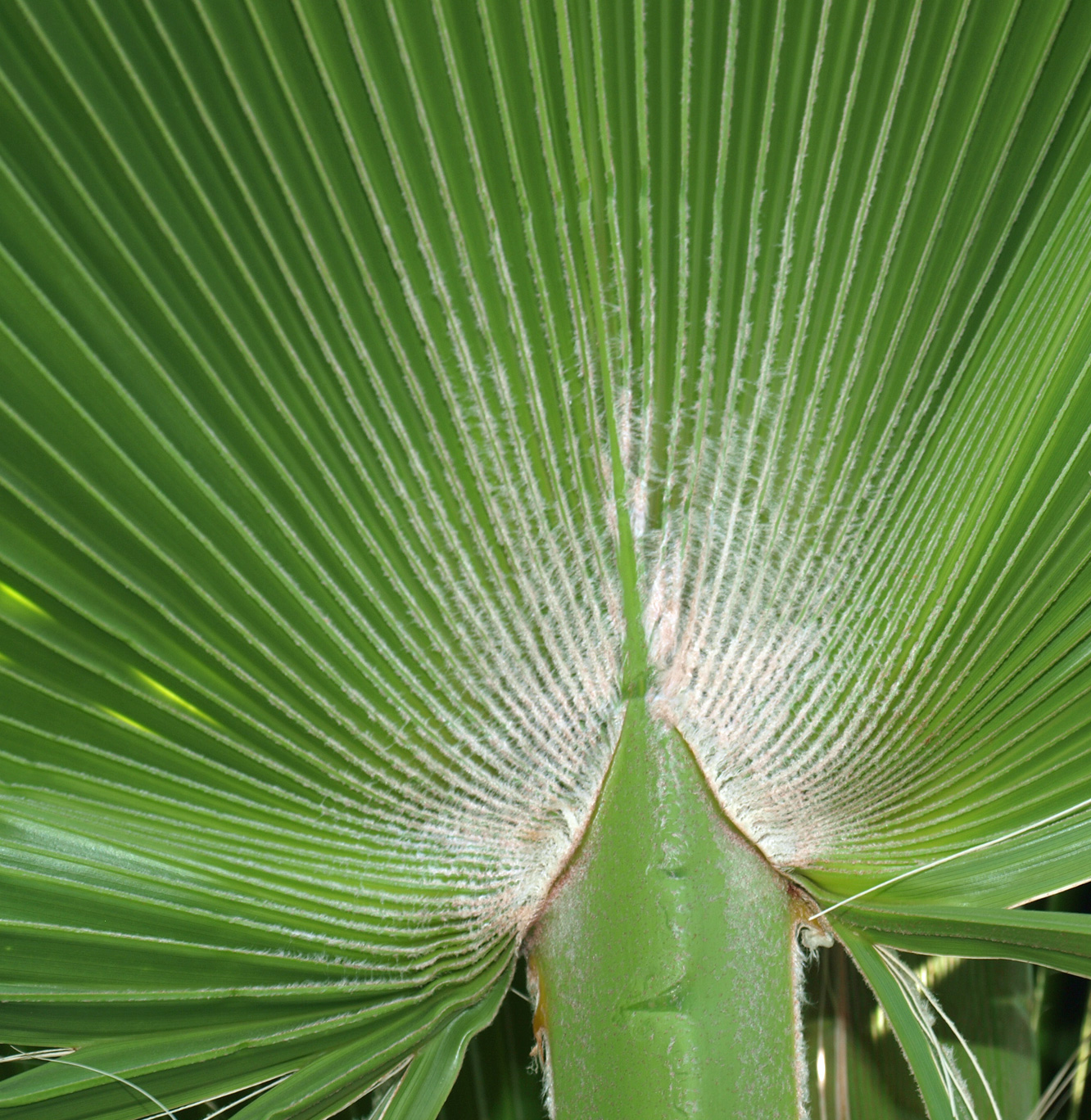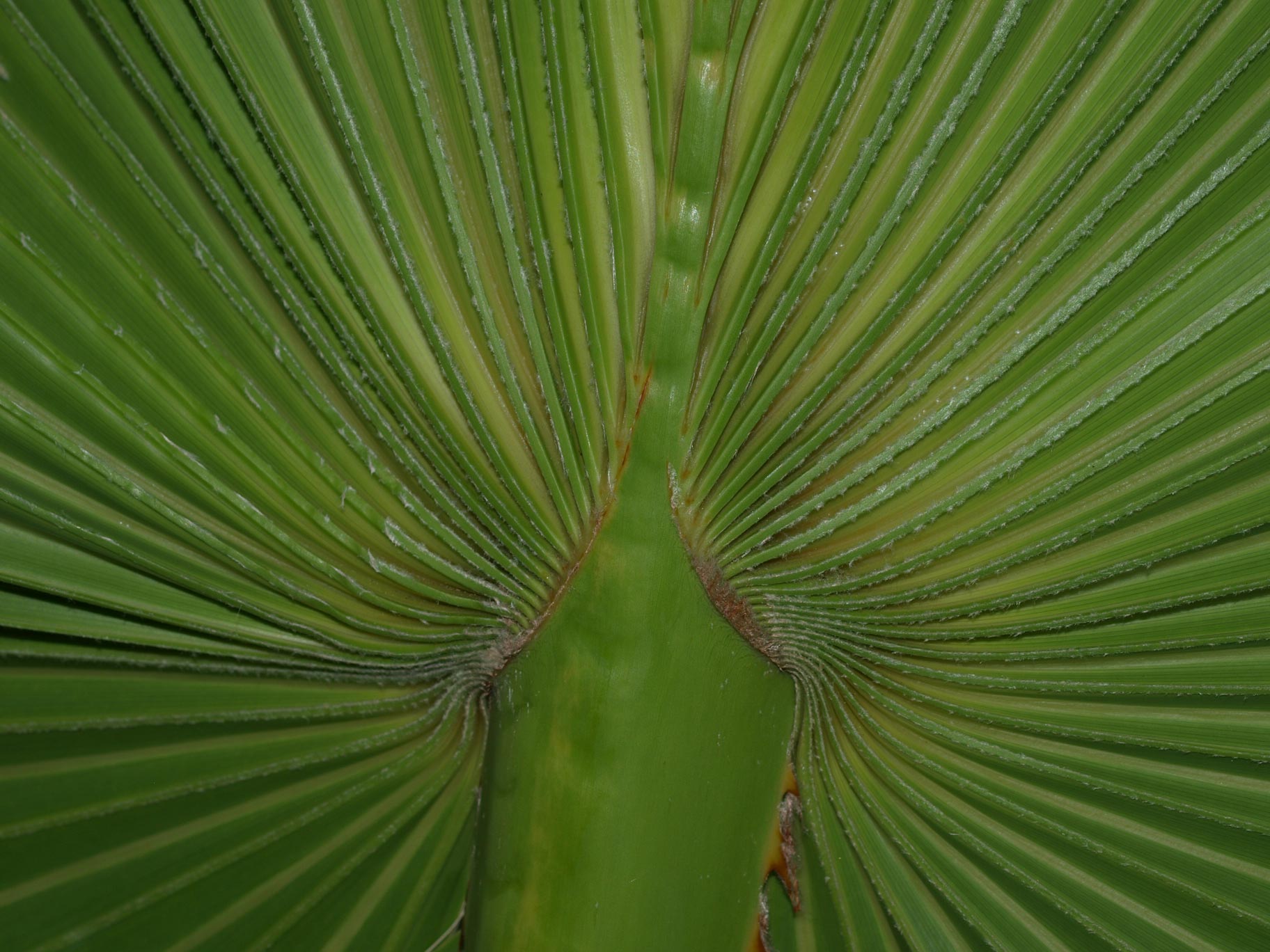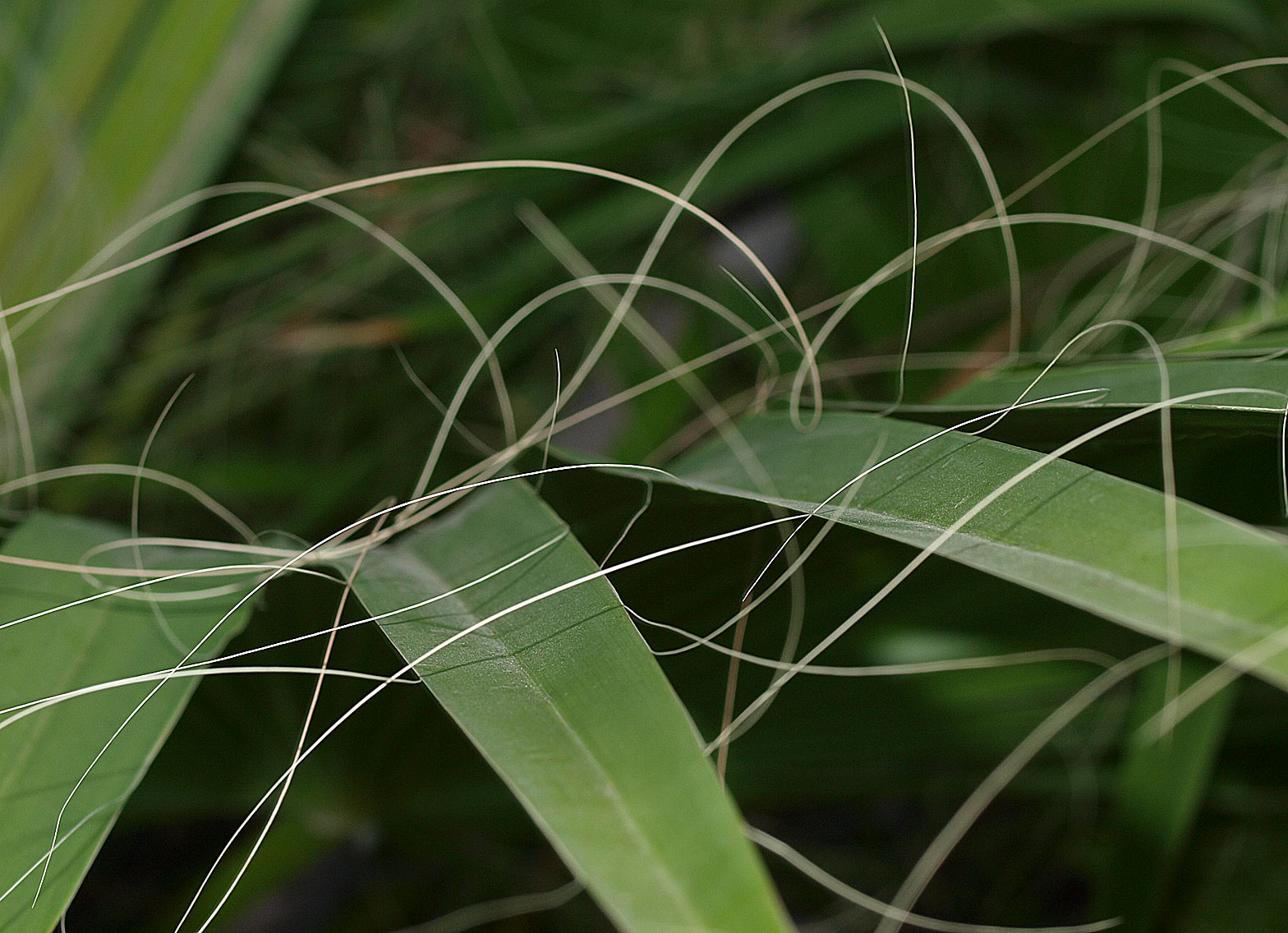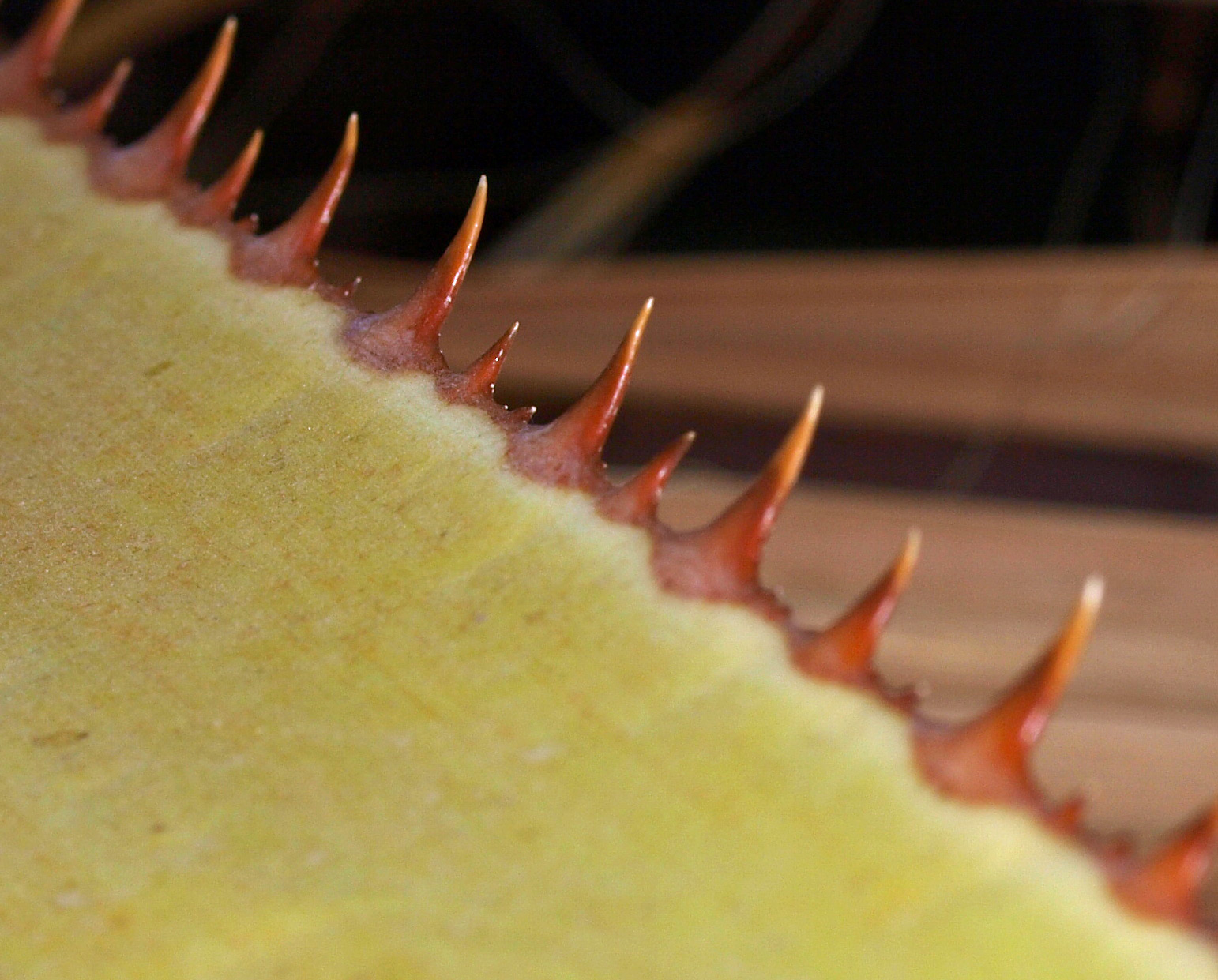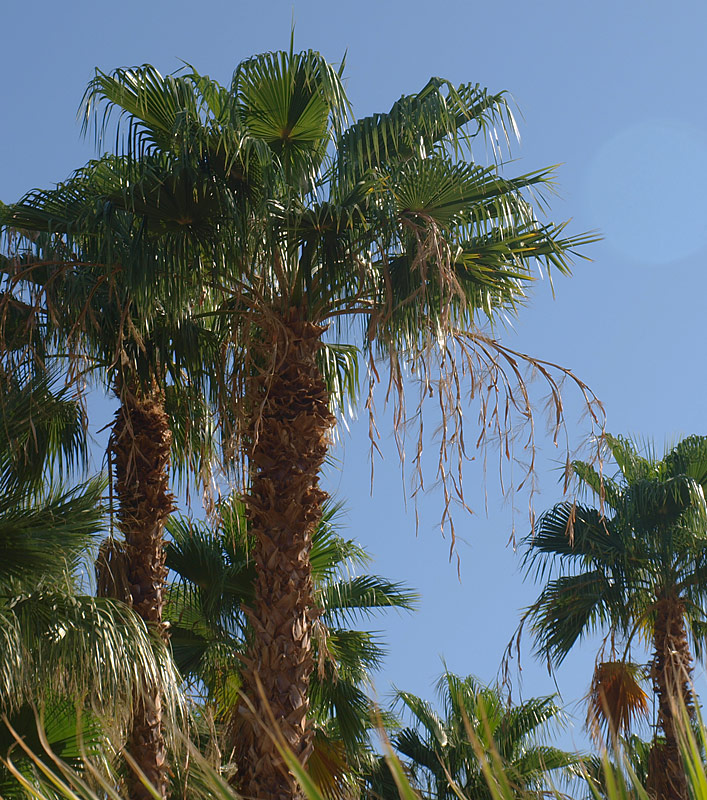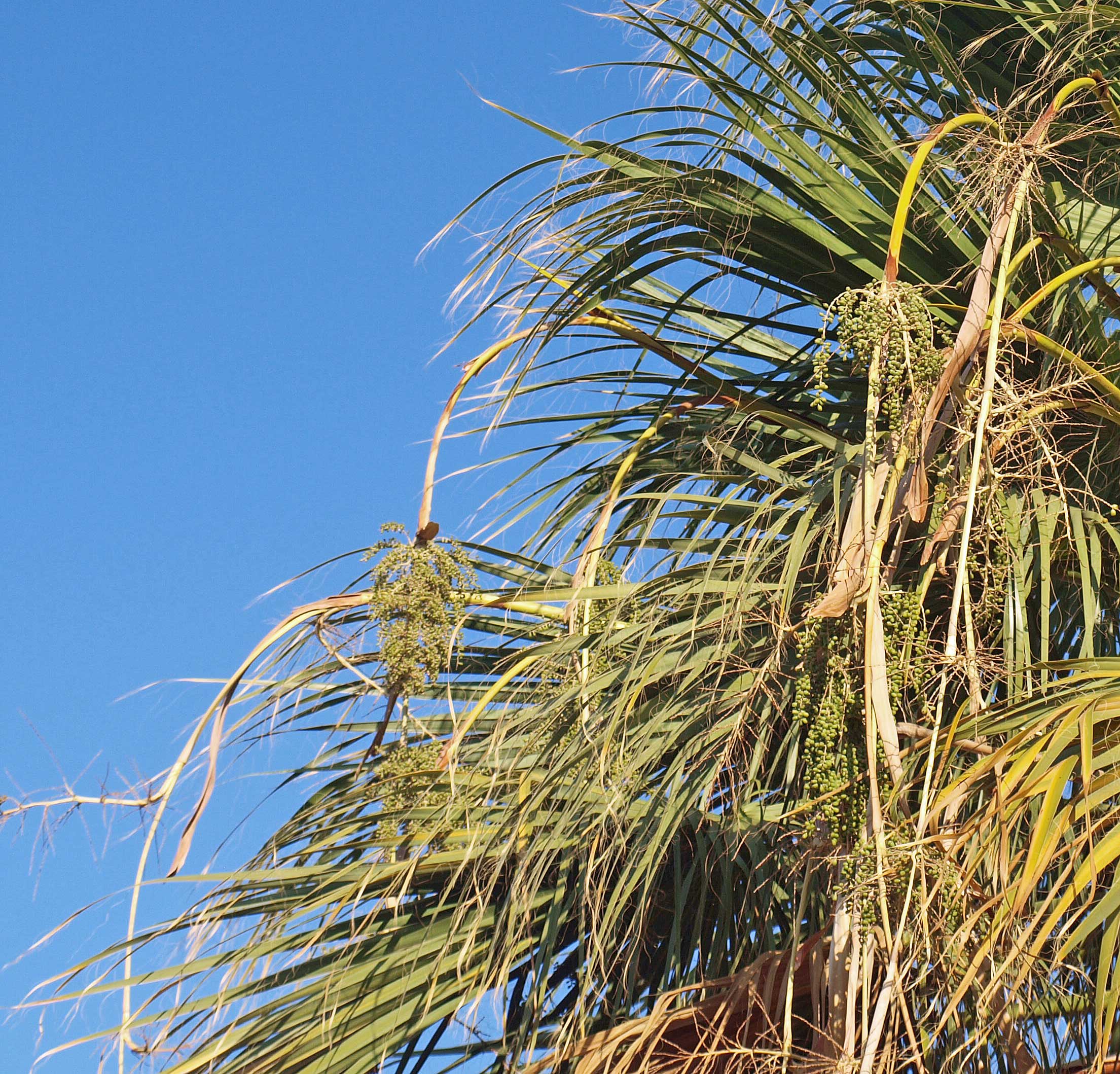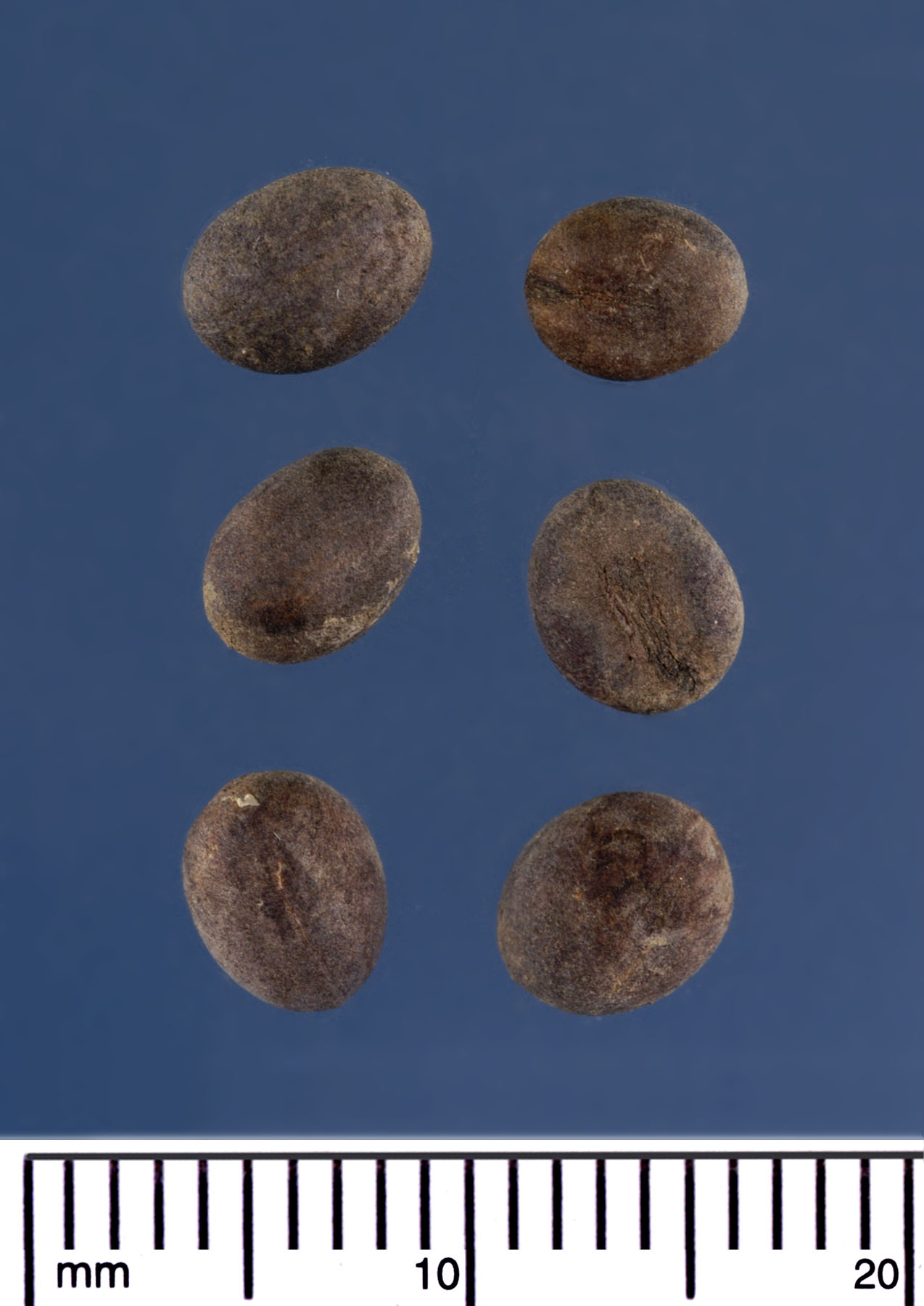Washingtonia filifera
|
Washingtonia filifera habit. Coachella Valley Preserve, Thousand Palms Oasis |
|
Washingtonia filifera habit. Coachella Valley Preserve, Thousand Palms Oasis |
|
Washingtonia filifera palms showing marcesant leaves with human on the left (for scale). |
|
Washingtonia filifera habit. Nursery grown palms with leaves pruned away. |
|
Washingtonia robusta (left) Washingtonia filifera (right) |
|
Washingtonia filifera with open canopy |
|
Washingtonia filifera base of columnar stems |
|
Washingtonia filifera underside of leaf from young palm |
|
Washingtonia filifera adaxial hastula |
|
Washingtonia filifera abaxial surface with costa |
|
Washingtonia filifera close view of abaxial surface with costa |
|
Washingtonia filifera young palm abaxial surface with costa |
|
Washingtonia filifera leaf segment marginal fibers |
|
Washingtonia filifera teeth along petiole margins |
|
Washingtonia filifera close view of teeth along petiole margins |
|
Washingtonia filifera inflorescence branching |
|
Washingtonia filifera immature fruits |
|
Washingtonia filifera seeds (mm scale). Photograph courtesy of Mariana P. Beckman, DPI |
Common name
California fan palm, desert fan palm
Description
Stems: Solitary, columnar, upright to 15 m tall and 100-150 cm diameter, covered with a skirt of marcescentmarcescent:
remaining attached after becoming old and withered (e.g., aging leaves of <em>Washingtonia </em>palms suggest the common name, “petticoat palm”)
leaves (unless removed for landscape appeal). Old leafleaf:
in palms -- the leaf blade (which is usually divided into leaflets or leaf segments), the petiole (or leaf stalk) and the sheath (which forms the attachment of the leaf to the stem)
bases usually fall away after many years, to leave a smooth gray stem with closely spaced leafleaf:
in palms -- the leaf blade (which is usually divided into leaflets or leaf segments), the petiole (or leaf stalk) and the sheath (which forms the attachment of the leaf to the stem)
scar rings. Leaves: Costapalmate, induplicateinduplicate:
Most palm leaflets or leaf segments are obviously folded. If the folds create a V-shape, with the midrib lower than the margins (so that rain might fall "into a valley"), the folding is induplicate.
, split about half the blade length into numerous segments with pendulous tips and threads (marginal fibers) hanging between segments. Several grayish-green leaves form an open crown. Petioles split, armed with curved teeth. The base of the lower surface of the leafleaf:
in palms -- the leaf blade (which is usually divided into leaflets or leaf segments), the petiole (or leaf stalk) and the sheath (which forms the attachment of the leaf to the stem)
blade scantly covered with near white pubescence. The adaxialadaxial:
toward the axis or the side of an organ facing toward the axis (<strong>ad </strong>as in <strong>ad</strong>here); for example, the upper surface of a leaf blade or petiole
hastula is prominent with tattered margins. Flowers and fruits: Inflorescences are numerous, branched to at least three orders, and project from the crown extending beyond the leaves. Individual flowers are bisexual, white. Fruits are spherical to pear-shaped, up to 1 cm in diameter, and brownish-black to black when ripe.
Diagnostic features
Field: Solitary, columnar, upright to 15 m tall and 100-150 cm diameter, covered with a skirt of marcescentmarcescent:
remaining attached after becoming old and withered (e.g., aging leaves of <em>Washingtonia </em>palms suggest the common name, “petticoat palm”)
leaves. Washingtonia filifera has an open crown of grayish green, costapalmatecostapalmate:
a fan-shaped leaf with a midrib (costa) extending into the blade, sometimes extending far enough into the blade to cause it to curve (e.g., <em>Sabal palmetto</em>)
leaves with armed petioles split at the base.
May be confused with
Washingtonia robusta, but that species has a tapered stem, roughly twice as wide at the base as the apex, and bright green leaves forming a dense crown, rather than the columnar stemmed W. filifera, with grayish-green leaves and long petioles forming an open crown.
Distribution
Native to the southwestern United States (California and Arizona) and Mexico
Additional comments
The two Washingtonia species hybridize freely, making identification of cultivated palms difficult. In Florida, W. robusta is more often planted; in California and Arizona, both are planted, but W. filifera is more common. Both species are planted in drier areas of Hawaii, but W. robusta is much more common.
The fungal disease caused by Sphaerodothis neowashingtoniae, called diamond scale, can infect Washingtonia filifera and its hybrids, leading to loss of leaves and an even sparser crown.
Scientific name
Washingtonia filifera (Linden ex André) H.Wendl. ex de Bary
Family
Arecaceae/Palmae
Synonyms
Neowashingtonia filifera (Linden) Sudw.
Pritchardia filifera Linden ex André
Washingtonia filamentosa (H.Wendl. ex Fenzi) Kuntze
Washingtonia sonorae S.Watson


